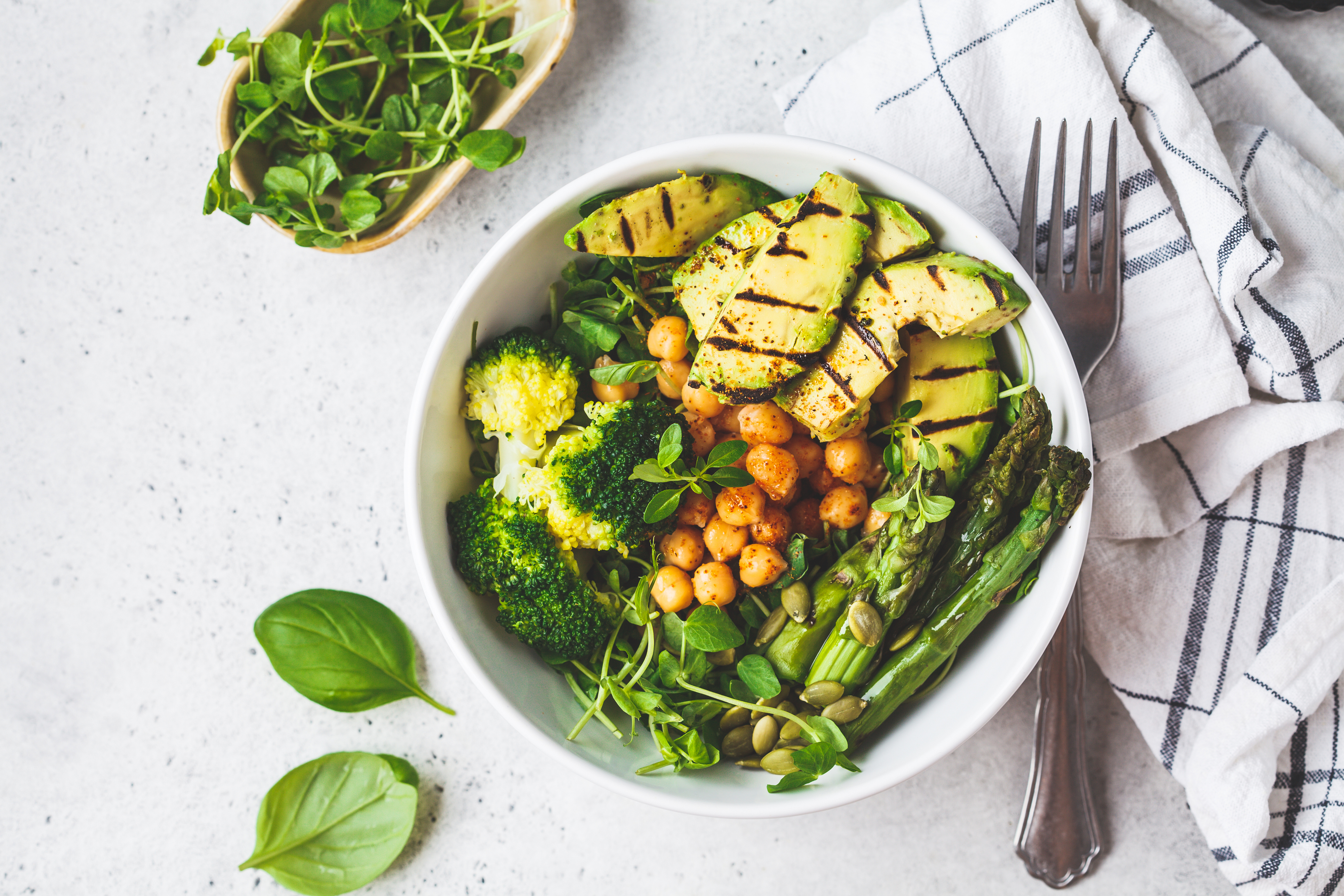
Plant-based eating and keto are topping the list of the most popular diets at the moment, and combining them can be no easy feat. Keto requires a very proportion of fat in the diet (approximately 70%), with less protein (around 25%) and even fewer carbohydrates (aka carbs – around 5%). This isn’t very much considering that it equals 25g of carbohydrates in the average Australian intake (2000 calories). The challenge is that most plant-based eaters are heavy on the carbs and low in fats, simply because of the availability of fruits and vegetables and the carb-heavy aspect of grains that can be a mainstay of the vegan diet. Start implementing these steps today to enjoy the benefits of your new plant-based and keto lifestyle!
1. Keep healthy fats high
Considering the majority of your calories are coming from fats, there are some amazing plant-based options out there for you (and a lot more delicious than animal fats!). Make friends with various types of plant oils, like olive oil, which will give you the monosaturated fats that your body loves. Coconut oil, coconut butter and MCT oils contain easily-digested fats that your body can quickly use as energy, and also provide some benefits to maintain a healthy gut. Nuts and seeds are a potent source of delicious vegan fats, though they do contain a small number of carbs too. Brazil nuts, macadamias and pecans are examples of nuts that are the lowest in carbs and have amazing qualities that will nourish you from within. If you are keen to supplement, It's important to get enough omega-3 fatty acids in your diet, and now there are vegan versions available!
2. Know your fruits and vegetables
Not all fruits and veggies are the same! Depending on the type, you can either have a low carb, keto-friendly whole food or a high-carb, sugary option that threatens to blow out your daily allowance.
How to know which fruits and vegetables to choose? This will take some research on your part, but in terms of veggies, above-ground ones tend to be lower in carbs. Here’s a list of foods to get you started:
High sugar fruits to restrict or avoid:
- Grapes
- Bananas
- Cherries
- Mangoes
- Pineapples
Low sugar fruits to enjoy:
- Avocado
- Berries like raspberries and strawberries
- Lemons
- Limes
- Grapefruit
High sugar vegetables to restrict or avoid:
- Beetroots
- Sweet potatoes
- Sweet corn
- Carrots
- Green peas
Low sugar vegetables to enjoy:
- Spinach
- Zucchini
- Broccoli
- Asparagus
- Mushrooms
3. Stay away from most vegan snack foods
You’ll see tons of vegan options on the market now, ready to be a quick and easy source of nutrition. The challenge is, most of these are super high carb, and high sugar too! A typical bliss ball, for example, can have 20g of carbs and over 10g of sugar in a really small size serving (approx. 40g). Why is this the case? Most vegan snack foods like this have a base of dates, which are super calorie dense and have lots of sugar – it's like a natural sweetener, tastes great and makes an awesome energy fix, so this is why a lot of brands do it. Always check the label if you’re unsure. Some keto-friendly vegan snack foods are cauliflower puffs, broccoli chips, or even almond chips! When all else fails, remember that the food should be based around high fats.
4. Keep track of your macros
Unless you’re an expert intuitive eater, it’s a wise idea to keep track of what you’re eating with an app like MyFitnessPal, at least in the beginning. This way, you can sure that you’re in a state of ketosis because carbs can add up quite quickly! It’s also an easy way to check up the carb content of fruits and veggies that you’re not sure about. Carrots, for example, have 10g of carbohydrates per 100g. If you’re trying to keep carbs under 25g, along with everything else that you’re eating, it can be really easy to go over this amount! Tracking your macros is also helpful to help you see what foods your gut does and doesn’t agree with, so you can keep tweaking your diet for the best results.
Are you up to the challenge?
Being plant-based and keto can be a real hard task, but it doesn’t have to mean you’re restricted to boring foods! Get creative, research some recipes and substitute out carbs where you can. Thanks to our modern advances in technology, companies can be quicker to respond to consumer desires, and this is where you’re at an advantage – more people want to go keto, and more people want to go plant-based! Be smart about your choices, so you don’t go over your carb limit and kick yourself out of ketosis. After a few weeks of adjusting to your new diet, you may decide its not for you, or you may be loving it! Either way, always use your body as your guide. Bon appetite!






